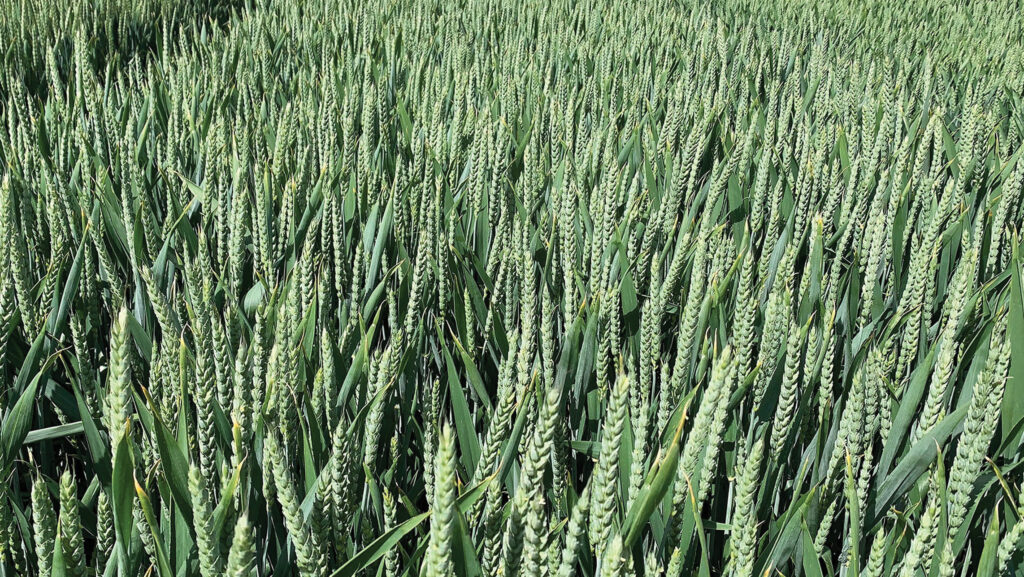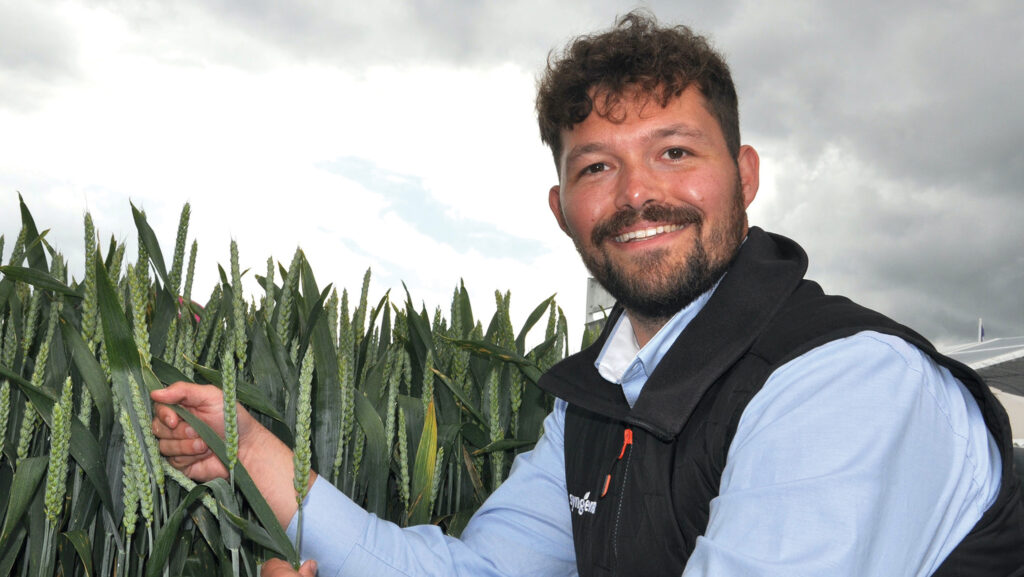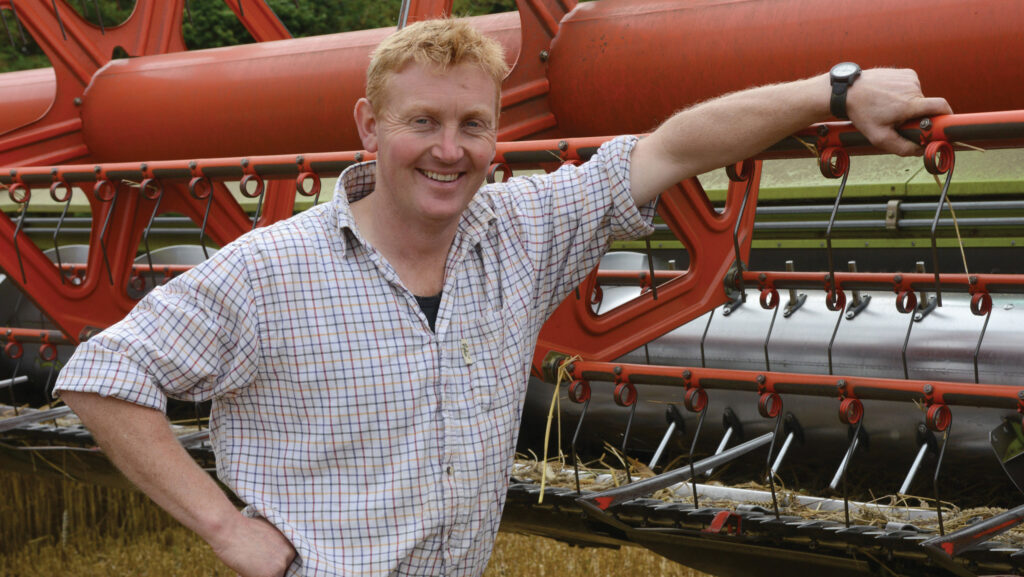How to manage Cheer wheat to maximise yields and quality
 © Syngenta
© Syngenta Farmers growing Cheer milling wheat for the first time this season are being advised to tailor their disease and growth regulation strategies according to drilling date.
This approach will enable farmers to maximise returns by delivering high yields and meet full milling specs.
Last year saw the first Group 1 wheat addition to the AHDB Recommended List (RL) since 2017, which the industry hopes will help revive the milling wheat area.
See also: Expert tips on managing very variable crops this spring
In 2020, milling varieties accounted for about 30% of the total wheat area and this has declined to less than 20% this season.
There are a number of reasons for this decline, including a lack of new variety choice with existing RL options being more challenging to grow with their poorer rust resistance.
However, Cheer, with its 8 rating for yellow rust and 6 for brown rust, brings some much-needed disease resistance, with an untreated yield of 82%.
So how can farmers take advantage of the newcomer to deliver high yields and meet milling specs?
2024-25 season
One notable factor this autumn has been the stop/start drilling because of the wet weather, and while most farmers have got all their planned wheat in the ground, there is a wide range of drilling dates.
“The early-drilled wheats have had a good start, but some of the later drilled wheat is looking sorry for itself,” says Syngenta seeds technical manager Matthew Bull.

Matthew Bull © Syngenta
Generally, early-drilled crops have good biomass so disease management will be key, as well as growth regulators to promote rooting and keep it standing.
Later drilled wheats have been sat in wet soils and the focus will be on early crop nutrition to set plants up for yield and quality, he says.
Disease management
The septoria risk will be elevated in early-drilled crops with their bigger biomass coupled with exposure to more disease cycles.
Meanwhile, for later drilled ones, yellow rust will be a priority.
And this is where Cheer’s good resistance (8) comes in, compared with Skyfall and Zyatt’s 3 ratings.
Cheer is also the only Group 1 with seedling resistance to yellow rust.
This resistance, along with decent resistance against septoria and brown rust, offers farmers some risk mitigation against missed or compromised spray timings.
Matt points to weather data at Chelmsford last season in an example milling wheat area.
There were a limited number of spray days from the T0 to T2 timings in 2024, where it was both dry and the wind speed low enough.
With susceptible varieties, missing the optimal timing means rusts can get away and you cannot recover the green leaf area lost.
He recalls a trial site near Newark, where the T1 fungicide application was delayed by seven to 10 days and yellow rust took hold in the susceptible varieties.
“It was difficult to get back and, consequently, it hit yield potential and grain quality, in particular specific weight.”
But even with good resistance, Syngenta says the extreme septoria and brown rust epidemics of 2024 have brought not only variety, but fungicide choice for quality wheats in to focus.
“Going forward, a combined approach to disease management in this sector is as important as ever.”
Growth regulators
Cheer has a relatively prostrate growth habit over winter, but once past stem extension, it is similar to Skyfall in terms of speed of development.
While it is taller (90cm in height) than other milling varieties, it has good resistance to lodging.
Matt recommends a “little but often” three-spray programmed approach (see “Programmed approach to growth regulation”).
“With quality wheats, there is too much to lose if crops go down, with lost yields and quality.”
Rates should be tailored according to the situation.
Programmed approach to growth regulation |
||
|
Growth stage |
Product |
Target |
|
30 |
Moddus (trinexapac-ethyl) 0.1-0.2 litres/ha with/without chlormequat |
Promotes root foundation, tiller survival and reduces apical dominance |
|
31-32 |
Moddus (trinexapac-ethyl) 0.1-0.2 litres/ha with/without chlormequat |
Increased stem strength/thickening and crop height reduction |
|
37-39 |
Ethephon-based product (rate determined by risk) |
Reduce final height and centre of gravity in high lodging risk situations |
This spring, the priority will be early-drilled crops that are getting a bit forward, as they will need robust growth regulation.
Matt explains that trials have shown the T2 timing spray is the most important one for reducing the final height of the crop and reducing lodging risk.
Another priority is early plant growth regulators (GS30) on later drilled crops, as this will help promote rooting and tiller retention.
“But don’t forget, crops need to be actively growing when applying plant growth regulators to get the most out of them,” he says.
Grain quality
Cheer has the highest Hagberg and specific weight of the Group 1s, so helping farmers achieve the full milling spec.
Matthew recalls harvest 2023, which was a challenging stop/start harvest where crops were lodging with grains sprouting in the ear.
Looking at the RL harvest results from 2023, Cheer met the Hagberg spec (250 seconds) at most sites and where it didn’t, it had the highest figure when comparing to other Group 1 varieties in the trials.
It means it’s more likely to hit requirements to achieve a premium.
But as with all milling wheat, farmers are still advised to prioritise milling over feed crops to preserve quality.
In terms of nitrogen strategies to hit 13% protein, Matthew says it is similar to Skyfall.
“Many farmers will be familiar with Skyfall, so adopt a similar approach.”
Replacing some of the late granular fertiliser with foliar products can help crops hit 13% protein, but farmers should check with their miller as not all allow this.
Sulphur is also important to get the most out of applied N, he says.
In summary
Early-drilled crops
- Focus will be disease management (especially septoria)
- Robust plant growth regulator (PGR) programmes
Late-drilled crops
- Focus on early crop health, driving biomass and setting platform for yield
- Promote root growth through early nutrition and PGRs
- Septoria risk down, but risk of yellow rust up (however, Cheer benefits from seedling resistance, which will help)
Case study
Oxfordshire grower Richard Bosley

Richard Bosley © Photogenic Photography
Oxfordshire grower Richard Bosley has expanded his area of Cheer wheat on the back of last year’s experiences growing the variety.
As well as yielding 10.3 t/ha, the 4ha he grew as a look-see, prior to it receiving full Group 1 milling status, delivered 13.1% protein, 341 Hagberg and 82kg/hl specific weight.
The end result was a £70/t premium over feed price, says Richard, who runs a 360ha mixed enterprise at GA and FA Bosley, Nevilles Farm, Wantage, with another key benefit being the way it stood up to season-long pressure from yellow rust.
“I grew Cheer as a first wheat, drilled around 11 October, after a two-year grass ley. I mucked it, ploughed it, and it got a pre-emergence herbicide and was rolled.
“Some of the main things I look at in a variety are specific weight and disease resistance. I never want to be less than 76-77kg/hl.”
Typically, about 120ha of first and second milling wheat are grown in the farm’s 200ha arable rotation, which also includes winter oilseed rape and winter beans.
The rest of the farm is down to grassland and forage maize for the farm’s 500 beef cattle, plus some equine hay.
“It’s nice to get good yield and have consistent quality. We’ve not had one sample come back at less than 13% protein,” says Richard.
With about 25t/ha of manure applied before the farm’s wheat crops, there is plenty of potential to boost soil fertility.
However, as on many farms last season, Richard says the wet spring meant early nitrogen on Cheer was unavoidably delayed.
“The first nitrogen went on in the first week of March. Because we couldn’t get fertiliser on as early as we wanted, it looked a bit sorry for itself.
“But when we got the N on, it was away. We generally soil test, and use polysulphate for sulphur, which also puts some potassium on, but we don’t apply K otherwise because it comes from the muck.”
In total, 275kg N/ha were applied over four splits – including prilled fertiliser and 200 litres/ha of 18% foliar N applied at the soft cheese grain stage.
Richard explains that his crops are walked by Nigel Britten of Bartholomews, and other inputs included micronutrients, three applications of plant growth regulator and a four-spray fungicide programme.
Following his first-year results, Richard upped his area to 70ha this season. He is also growing 70ha of his usual Skyfall.
For practicality at harvest, he points to resilient Hagbergs as being important.
“We have a contractor to do our harvesting, so a variety that holds onto its Hagbergs is beneficial.”
But a key factor attracting him to Cheer, he says, is its yellow rust resistance.

